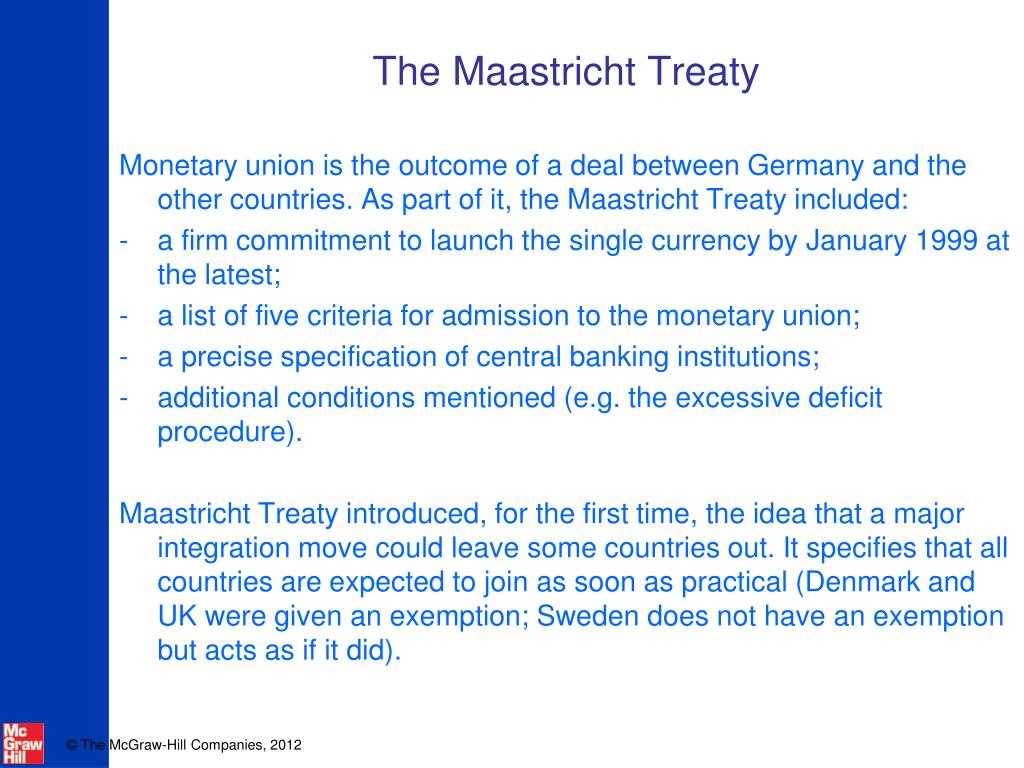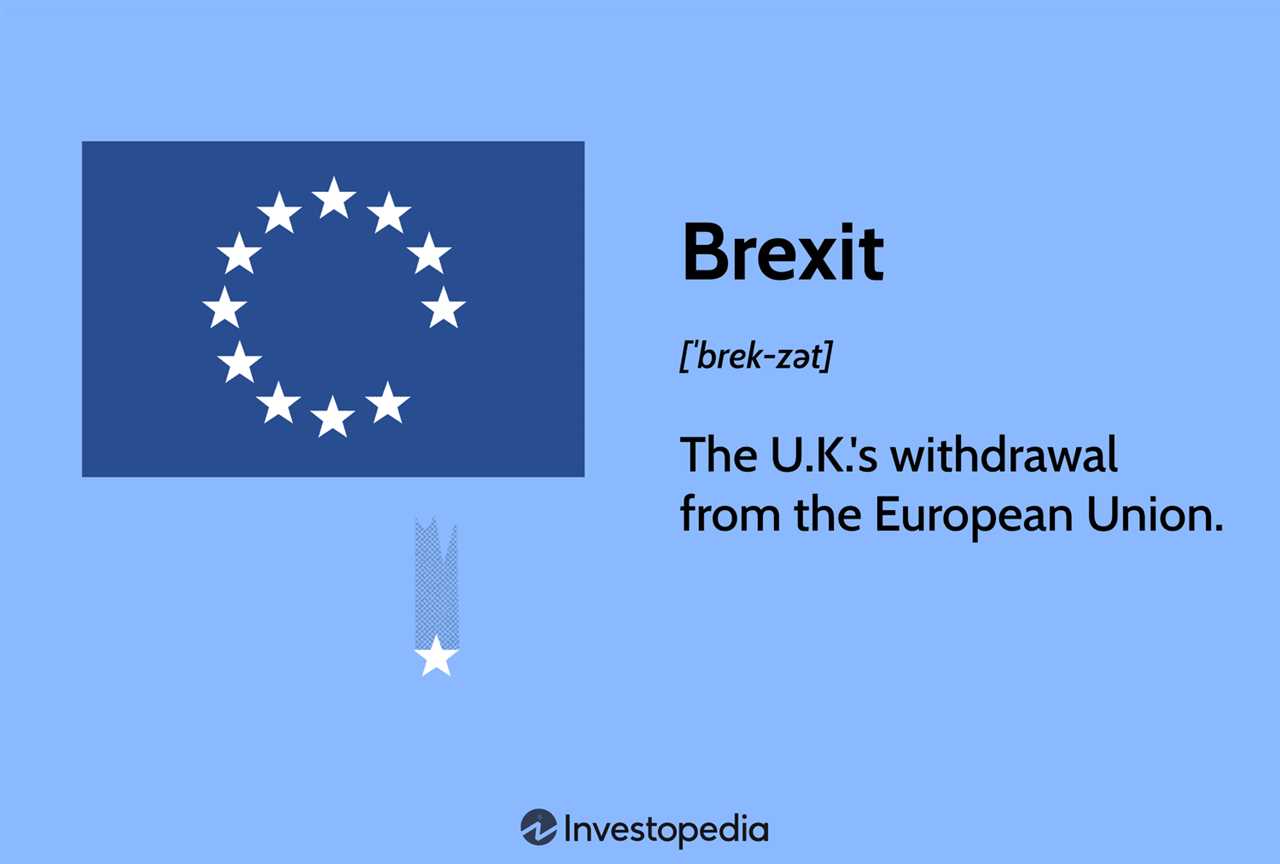Maastricht Treaty: Definition, Purpose, History, Significance

Definition
The Maastricht Treaty aimed to create a closer political and economic union among the member states of the EC. It established the EU as a supranational organization, with its own institutions and decision-making processes. The treaty also introduced the concept of European citizenship, which granted additional rights and protections to EU citizens.
Purpose
The main purpose of the Maastricht Treaty was to deepen European integration and promote stability and prosperity in Europe. It sought to strengthen the economic cooperation among member states, establish a common currency, and enhance political cooperation in areas such as foreign policy, security, and justice. The treaty aimed to create a single market with free movement of goods, services, capital, and people.
History
The ratification process of the Maastricht Treaty was not without challenges. It faced opposition and criticism from various political groups and citizens who were concerned about the loss of national sovereignty and the potential negative impact on their economies. However, the treaty was eventually ratified by all member states and came into force on November 1, 1993.
Significance
The Maastricht Treaty marked a significant milestone in the process of European integration. It laid the groundwork for the creation of the euro, the single currency of the EU, which was introduced in 1999. The treaty also expanded the competences of the EU, giving it more authority in areas such as foreign policy, justice, and home affairs.
Furthermore, the Maastricht Treaty paved the way for the enlargement of the EU, as it established the criteria and procedures for new member states to join. Since its entry into force, the EU has grown from twelve to twenty-seven member states, with more countries expressing interest in joining.
| Key Points |
|---|
| – The Maastricht Treaty was signed in 1991 and came into force in 1993. |
| – It established the European Union and introduced the concept of European citizenship. |
| – The treaty aimed to deepen European integration and promote economic and political cooperation. |
| – It laid the foundation for the creation of the euro and expanded the competences of the EU. |
| – The Maastricht Treaty has been instrumental in the enlargement of the EU. |
What is the Maastricht Treaty?
Key provisions of the Maastricht Treaty:
- Creation of the European Union: The treaty established the European Union as a new supranational entity, with its own institutions and decision-making processes.
- Economic and Monetary Union (EMU): The treaty laid the groundwork for the establishment of the euro, the single currency of the EU. It set out the criteria that member states had to meet in order to adopt the euro and created the European Central Bank (ECB) to oversee monetary policy.
- Common Foreign and Security Policy (CFSP): The treaty aimed to strengthen the EU’s role in international affairs by establishing a common foreign and security policy. It provided for closer cooperation among member states in areas such as defense, diplomacy, and crisis management.
- Justice and Home Affairs: The treaty expanded the EU’s role in areas of justice and home affairs, including cooperation on immigration, asylum, and law enforcement.
The Maastricht Treaty marked a significant step towards a more integrated and united Europe. It laid the foundation for the establishment of the eurozone and strengthened the EU’s role in shaping economic, political, and security policies. The treaty has had a profound impact on the European Union and continues to shape its development and future direction.
The Purpose of the Maastricht Treaty
1. Economic Integration
One of the main purposes of the Maastricht Treaty was to promote economic integration among the member states of the European Community. The treaty introduced the concept of the Economic and Monetary Union (EMU), which aimed to create a single market with a single currency, the Euro. The EMU was seen as a way to enhance economic cooperation, remove trade barriers, and stimulate economic growth within the EU.
2. Political Integration
Another important goal of the Maastricht Treaty was to promote political integration among the member states. The treaty established the European Union as a new supranational organization, with its own institutions and decision-making processes. It created the European Parliament, the European Council, the European Commission, and the Court of Justice of the European Union, which together form the core of the EU’s political structure.
3. Common Foreign and Security Policy
The Maastricht Treaty also aimed to strengthen the EU’s role in international affairs. It introduced the Common Foreign and Security Policy (CFSP), which aimed to coordinate the foreign policies of the member states and promote a common approach to international issues. The CFSP allowed the EU to speak with one voice on the global stage and to take joint action in areas such as peacekeeping, conflict resolution, and humanitarian aid.
4. Citizenship of the European Union
5. Cooperation in Justice and Home Affairs
The Maastricht Treaty also aimed to enhance cooperation among the member states in the fields of justice and home affairs. It introduced mechanisms for cooperation in areas such as immigration, asylum, border control, and the fight against organized crime. This cooperation has been further developed in subsequent treaties, leading to the establishment of agencies such as Europol and Eurojust, which support the member states in their efforts to combat cross-border crime.
| Key Points | Details |
|---|---|
| Economic Integration | Established the Economic and Monetary Union (EMU) and the Euro as a single currency. |
| Political Integration | Created the European Union as a supranational organization with its own institutions. |
| Common Foreign and Security Policy | Introduced the CFSP to coordinate the foreign policies of the member states. |
| Citizenship of the European Union | Granted EU citizenship to all nationals of the member states. |
| Cooperation in Justice and Home Affairs | Enhanced cooperation in areas such as immigration, asylum, and the fight against organized crime. |
History of the Maastricht Treaty
The treaty also introduced the concept of European citizenship, which granted citizens of EU member states additional rights and protections. It established the framework for a common foreign and security policy, as well as cooperation in areas such as justice and home affairs.
Furthermore, the Maastricht Treaty laid the groundwork for the creation of a single currency, the euro. While the treaty did not specify a timeline for the introduction of the euro, it set out the criteria that member states had to meet in order to adopt the common currency.
Significance of the Maastricht Treaty
The Maastricht Treaty, signed on November 7, 1991, is a crucial milestone in the history of the European Union (EU). It has had a significant impact on the political, economic, and social landscape of Europe. Here are some of the key reasons why the Maastricht Treaty is considered significant:
1. Creation of the European Union
The Maastricht Treaty laid the foundation for the establishment of the European Union. It transformed the European Economic Community (EEC) into the EU, which expanded its scope beyond economic cooperation to include political and monetary integration. The treaty created a framework for closer cooperation among European nations and paved the way for the EU’s development into a supranational entity.
2. Introduction of the Euro
3. Strengthening of European Institutions
The Maastricht Treaty strengthened the role and powers of various European institutions. It enhanced the authority of the European Parliament, giving it more legislative powers and increasing its influence in decision-making processes. The treaty also established the European Central Bank (ECB) and the European Council, further consolidating the EU’s institutional framework.
4. Promotion of European Citizenship
The Maastricht Treaty introduced the concept of European citizenship, granting EU citizens additional rights and protections. It allowed citizens to move freely within the EU, live and work in any member state, and enjoy equal treatment under the law. This provision has fostered a sense of European identity and promoted cross-border cooperation and cultural exchange.
5. Expansion of EU Membership

The Maastricht Treaty opened the door for the expansion of EU membership. It established the criteria for countries to join the EU, including political stability, respect for democracy, and adherence to EU values. Since the treaty’s signing, the EU has grown from 12 member states to 27, with several countries from Central and Eastern Europe joining the union.

Emily Bibb simplifies finance through bestselling books and articles, bridging complex concepts for everyday understanding. Engaging audiences via social media, she shares insights for financial success. Active in seminars and philanthropy, Bibb aims to create a more financially informed society, driven by her passion for empowering others.
